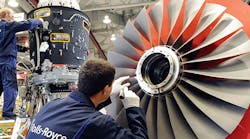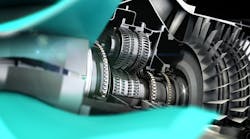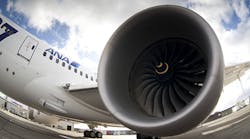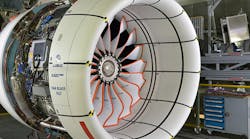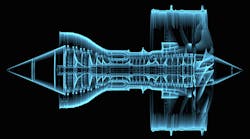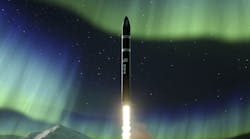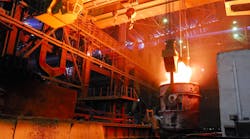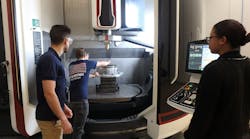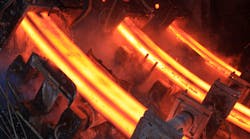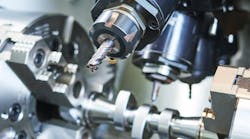Rolls-Royce of North America is planning a $30-million expansion of its R&D capabilities in Southern California, and will build a new research center in Cyprus, Calif. to research ceramic-matrix composite (CMC) materials and production processes. The goal is to develop new products and technologies for manufacturing jet-engine components.
CMCs are formed with silicon-carbide (SiC) ceramic fibers in a SiC matrix, and then coated with proprietary ceramic materials. “The development of lighter, stronger, composite fiber components is just part of our commitment to continuously improve the performance of our products by focusing on lowering fuel consumption, emissions and noise,” according to Marion Blakey, president and CEO for North America.
According to Rolls-Royce, CMCs provide the high-temperature resistance with the strength and endurance needed for gas turbine engine applications. Also, because they are lighter than the specialty alloys more typically used in such applications, parts formed in CMC help save fuel costs and require less cooling to perform reliably.
CMCs have been adopted for static elements of turbofan engines, as in the high-pressure turbine shroud for the LEAP engines series, produced by CFM International (a joint venture for Rolls-Royce rival GE Aviation.) Recent efforts seek to use CMCs as the rotating elements of turbofan engines.
“The turbine sits at the heart of the engine,” according to Andy Greasley, exec. v.p., Turbines for Rolls-Royce Civil Aerospace. “I am very excited about several technologies we are developing across Rolls-Royce that will contribute to a significant reduction in fuel consumption. Our HTC team in California is part of a global team working on high-temperature composites.”
Rolls-Royce bought Hyper-Therm High-Temperature Composites, in Huntington Beach, Calif., in 2013. It has grown from 15 employees to nearly 50 positions today, and expects to hire at least 10 more people this year, and up to 40 more as production and testing of products increases.
The 62,000-sq.ft. expansion in Cyprus, Calif., will be aided by state tax incentives of nearly $735,000, which Rolls-Royce has directed to purchase high-precision machinery. The new operation will develop production-ready manufacturing processes and produce components for engine testing programs. Manufacturing processes refined there will be applied to a future plant dedicated to manufacturing engine components.
“The team here in Cypress will be dedicated to seeing the commercial application of these technologies that will soon be adopted into advanced manufacturing production methods for gas turbine components,” according to Blakey.
